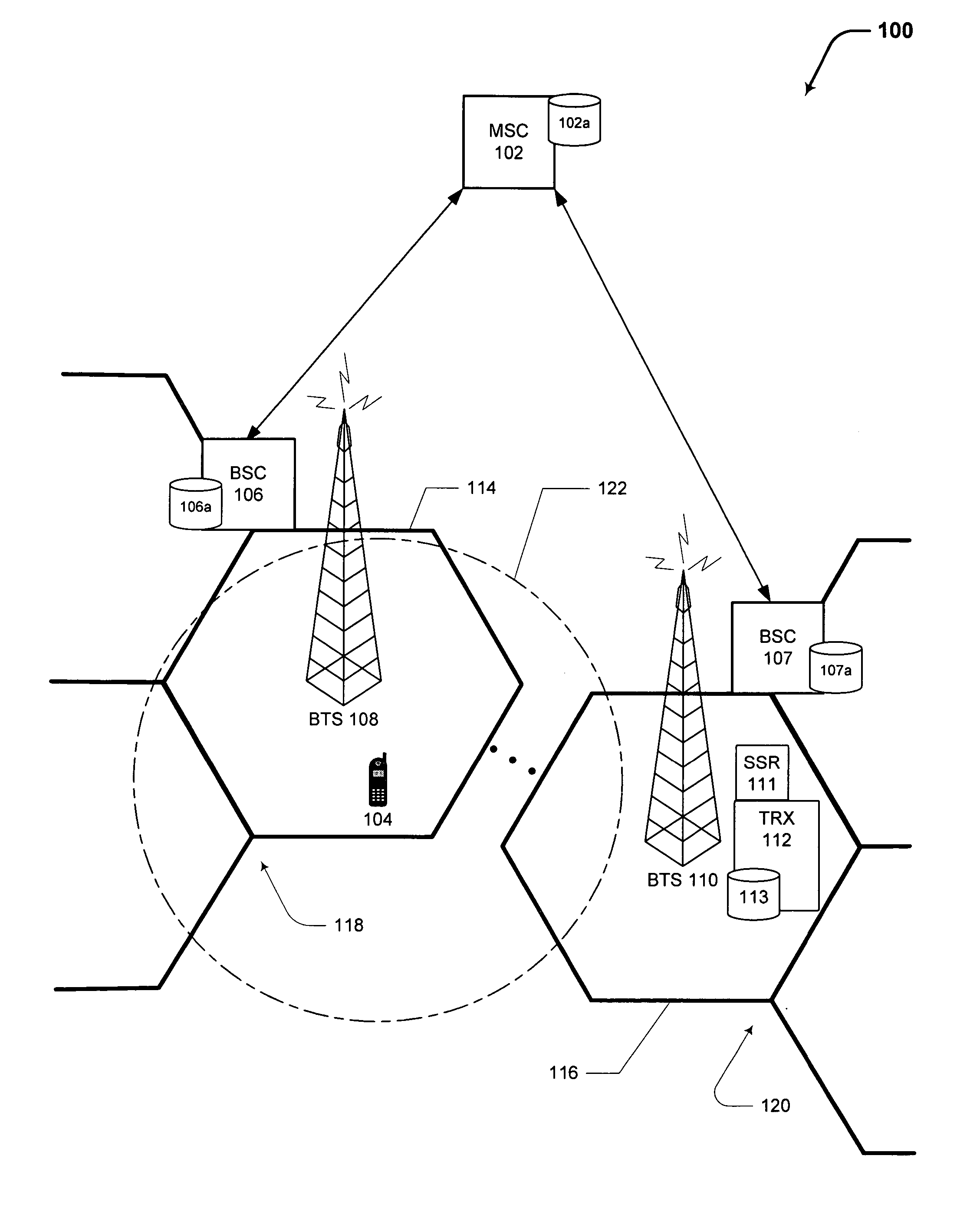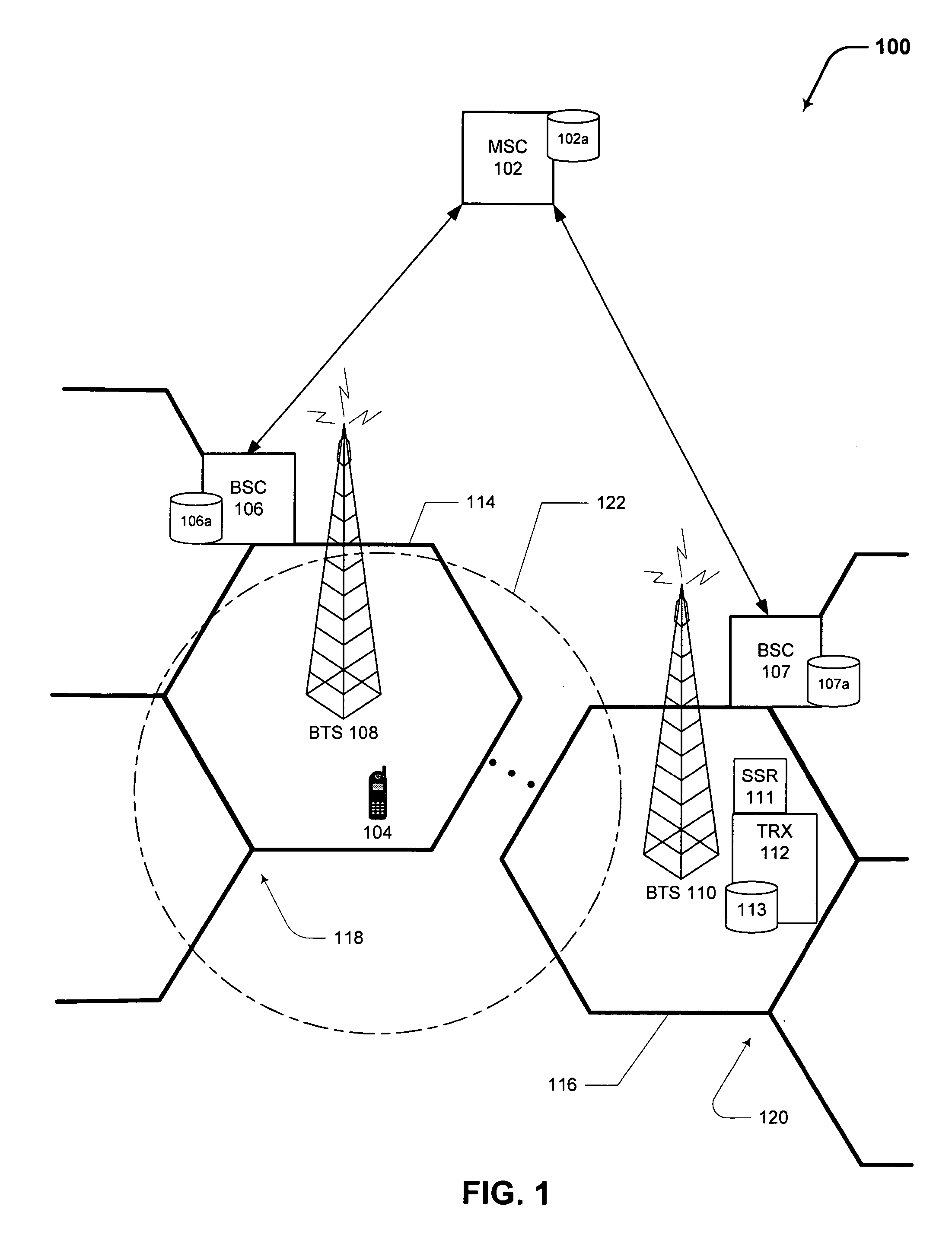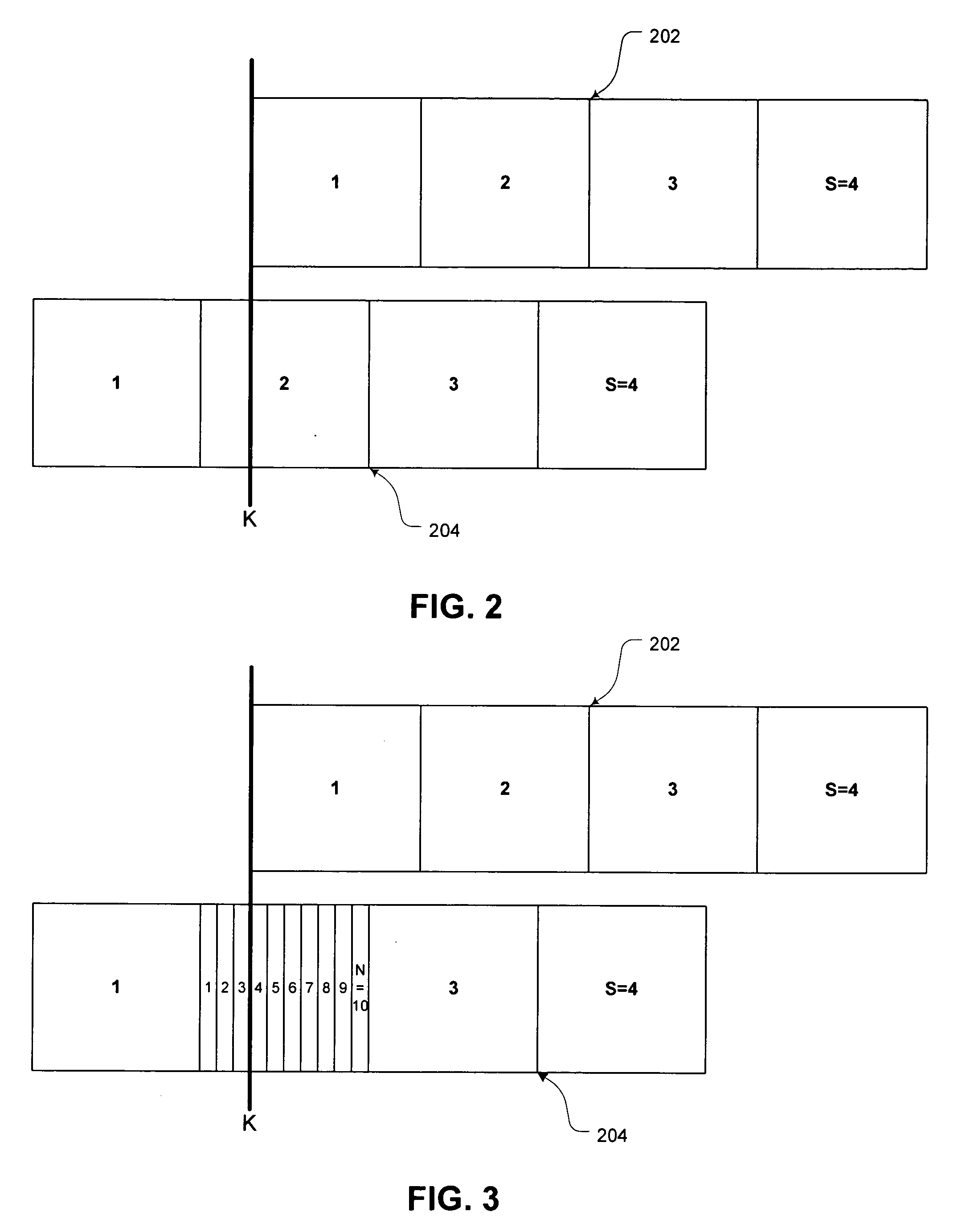Precision for interference estimation in unsynchronized wireless networks
- Summary
- Abstract
- Description
- Claims
- Application Information
AI Technical Summary
Benefits of technology
Problems solved by technology
Method used
Image
Examples
Embodiment Construction
[0039] Generally, the present invention encompasses systems and methods for improving the accuracy of interference estimation in unsynchronized wireless networks, in which the interfering signal may not necessarily be time synchronized with the receiver performing the interference measurements. The systems and methods of the invention are primarily described with respect to idle channel interference measurement techniques, although those skilled in the art will readily appreciate applications in conjunction with various other known and yet to be developed systems and methods for interference measurement.
[0040]FIG. 1 is a simplified block diagram illustrating a GSM network 100 as an exemplary environment of the present invention, although the various systems and methods of the invention can be implemented in various types of wireless networks, including IS-136 based TDMA wireless networks. Network 100 includes a Mobile Switching Center (MSC) 102, which functions at least in part to ...
PUM
 Login to View More
Login to View More Abstract
Description
Claims
Application Information
 Login to View More
Login to View More - R&D
- Intellectual Property
- Life Sciences
- Materials
- Tech Scout
- Unparalleled Data Quality
- Higher Quality Content
- 60% Fewer Hallucinations
Browse by: Latest US Patents, China's latest patents, Technical Efficacy Thesaurus, Application Domain, Technology Topic, Popular Technical Reports.
© 2025 PatSnap. All rights reserved.Legal|Privacy policy|Modern Slavery Act Transparency Statement|Sitemap|About US| Contact US: help@patsnap.com



